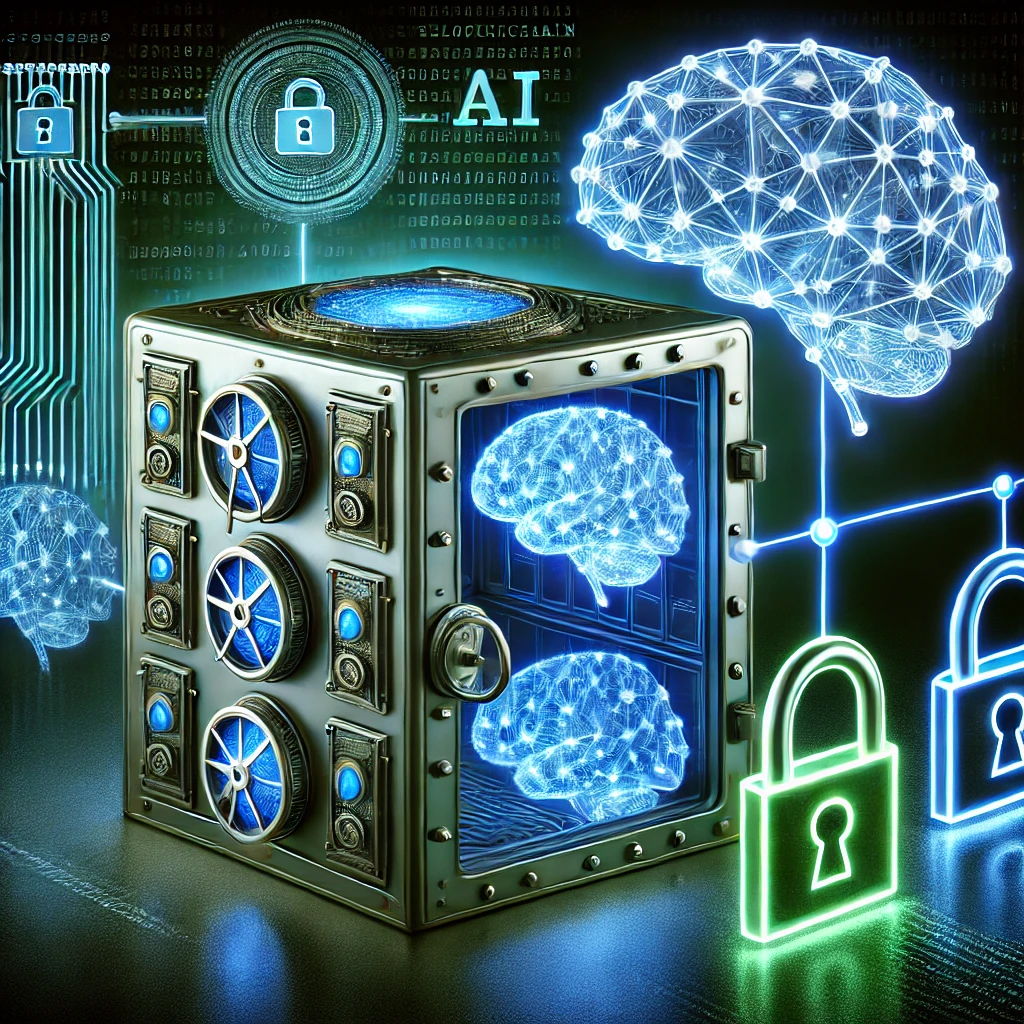Introduction
In today’s digital world, data security is more important than ever. With increasing cyber threats, it’s crucial to find effective ways to protect sensitive information. Two technologies, Artificial Intelligence (AI) and Blockchain, are emerging as powerful allies in keeping your data safe. By combining these technologies, businesses can enhance their security measures and safeguard their information from attacks.

What is AI?
Artificial Intelligence (AI) refers to the ability of machines to perform tasks that typically require human intelligence. This includes learning, reasoning, problem-solving, and understanding natural language. AI can analyze large amounts of data quickly, making it a valuable tool for identifying and responding to security threats.
Key Features of AI
- Machine Learning: AI can learn from data patterns and improve its performance over time without human intervention.
- Anomaly Detection: AI can identify unusual behavior in data, alerting security teams to potential threats.
- Automation: AI can automate repetitive tasks, allowing security professionals to focus on more complex issues.
- Natural Language Processing: This allows AI to understand and respond to human language, which can be useful in monitoring communications for security breaches.
What is Blockchain?

Blockchain is a decentralized digital ledger that securely records transactions across multiple computers. Each transaction is stored in a “block” and linked to previous blocks, forming a “chain.” This technology ensures that data is immutable, meaning it cannot be altered retroactively, which enhances transparency and trust.
Key Features of Blockchain
- Decentralization: Data is stored across a network of computers, reducing the risk of a single point of failure.
- Immutability: Once data is recorded on the blockchain, it cannot be changed, ensuring data integrity.
- Transparency: All transactions are visible to authorized users, fostering trust among parties.
- Security: Blockchain uses cryptographic techniques to secure data, making it difficult for unauthorized parties to access or manipulate the information.
How AI and Blockchain Work Together
Combining AI and Blockchain can significantly improve data security in several ways:
1. Enhanced Threat Detection
AI can analyze data on the blockchain to detect anomalies and potential threats in real-time. For example, if a transaction appears suspicious, AI can flag it for further investigation. This proactive approach allows organizations to respond quickly to potential threats, reducing the risk of data breaches.
2. Secure Data Sharing
Blockchain allows secure sharing of data between parties. AI can analyze this data to provide insights while ensuring that sensitive information remains protected. This is particularly useful in industries like healthcare, where patient data must be kept confidential. By using Blockchain for storage and AI for analysis, organizations can ensure that data is both secure and useful.
3. Fraud Prevention
AI can monitor transactions on the blockchain to identify fraudulent activities. By recognizing patterns indicative of fraud, AI can alert organizations to take action before significant damage occurs. This combination of technologies allows for continuous monitoring and rapid response to suspicious activities.
4. Automated Smart Contracts
Blockchain can use smart contracts—self-executing contracts with terms directly written into code. AI can automate these contracts, ensuring that they execute only under specific conditions, enhancing security and reducing the risk of human error. For instance, in a supply chain scenario, payments can be automatically released when goods are verified as received.
Real-World Applications
1. Financial Services
Banks and financial institutions use AI and Blockchain to detect fraud, secure transactions, and ensure compliance with regulations. AI algorithms analyze transaction patterns on the blockchain to identify unusual activities that may indicate fraud, while Blockchain provides a secure and transparent transaction history.
2. Supply Chain Management
Companies can track products from origin to destination using Blockchain, while AI analyzes the data to optimize supply chain processes and identify potential risks. This combination helps improve traceability, reduce losses, and enhance overall supply chain efficiency.
3. Healthcare
Medical records can be securely stored on a blockchain, and AI can analyze this data to improve patient outcomes while maintaining privacy. For example, AI can help identify trends in patient data that can inform treatment plans while ensuring that sensitive information remains confidential.
4. Cybersecurity
Organizations can use AI to analyze large volumes of security logs and data for unusual activity while employing Blockchain to ensure the integrity of the logs themselves. This layered security approach helps protect against unauthorized access and data tampering.
Advantages of Using AI and Blockchain for Data Security
- Improved Accuracy: AI reduces human error by automating data analysis and threat detection.
- Faster Response Times: Real-time monitoring and alerting allow for quicker responses to potential security threats.
- Increased Trust: The transparency and immutability of Blockchain enhance trust among stakeholders.
- Cost Efficiency: Automating security processes can reduce operational costs while improving security measures.
Challenges and Considerations
- Integration Complexity: Combining AI and Blockchain may require significant technical expertise and resources.
- Data Privacy: While Blockchain enhances security, it’s essential to consider how data is shared and used, especially in sensitive sectors like healthcare.
- Regulatory Compliance: Organizations must ensure that their use of AI and Blockchain complies with relevant regulations, which may vary by industry and region.


